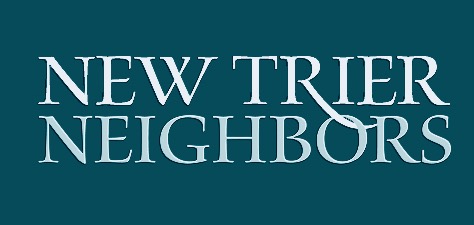The Kenilworth Village Board is looking to implement a controversial economic development tool, called a Tax Increment Financing (TIF) district, to help develop the village’s Green Bay Road business district. The business district has failed to attract development for years.
The Board is hoping that taxpayer subsidies and incentives for real estate developers will spur more commercial investment in the 15-acre area, which currently brings in about $1 million in property tax revenue for the village and other local governments. The board’s goal is to grow that amount to 3.5 million by 2042.
But TIFs, originally meant for blighted areas, are deeply controversial and prone to corruption. Many Kenilworth residents are already onto this, and it’s why they recently packed a Village board meeting to express their opposition to the proposed TIF. All Kenilworth residents should be skeptical of any attempt to impose a TIF district in the village. Whatever proponents say, TIFs don’t provide “free money” for development, nor are their benefits guaranteed. OurKenilworth.org has more on the specific issues the proposed Kenilworth TIF presents to the community.
The economic benefits of TIFs are unproven and the tool often ends up being a slush fund for politicians. And TIF property tax dollars are spent with far less transparency compared to regular city spending. The Navy Pier scandal, where Chicago politicians were caught funneling TIF money, is a perfect example.
About TIFs
TIFs redirect property tax revenues to areas that need development within the TIF. The city uses those funds to make improvements to properties or to provide incentives for private developers to build there. That, in turn, is meant to trigger growth in property values and higher tax revenues as a result.
Here’s how TIFs are meant to work:
“Once a TIF district is created, any additional property tax revenue generated as a result of an increase in property values in the district is diverted away from the tax districts that would ordinarily have received those taxes and into a special fund [to be used for property development].
As assessed property values in the TIF district rise, any new revenue [arising from] the increase in property value flows into the TIF district’s fund [which is used for further investment in the TIF].
TIF districts divert taxes not only from the city’s share of the area’s revenue, but also from the other taxing districts that collect from the area.
For the next 23 years (or until the district closes) those entities will receive tax revenue only on the value of the properties in the TIF district at the time the district was created.”
When a TIF expires, the property tax revenues in the TIF – theoretically now much higher than they would have been without the TIF – are made accessible to all local governments again.
Controversial
Apart from the fact that TIFs deprive other local governments like school districts of future tax revenues, another concern is whether TIFs are worth the cost. It difficult to prove whether or not a company would have invested in a TIF district without city incentives or determine the real return on investment for taxpayers.
TIF districts are also less transparent and hard for residents to understand. Because they exist outside of a community’s regular budget, it’s difficult to hold local officials accountable for what they do with TIF dollars every year.
And developers who receive TIF subsidies are rarely, if ever, held accountable for delivering the benefits they promise.
Bad idea
Even if Kenilworth residents trust their elected officials to handle TIF funds responsibly, there is no guarantee that the use of those tax dollars will be worthwhile to Kenilworth residents.
After all, the area has been unable to attract investment and improve during the longest stock market-boom this nation has seen. And as some residents pointed out at the recent Village Board meeting, the business district may have spacing and zoning issues that no amount of “incentives” can solve.
Some homeowners are also worried that the village may resort to eminent domain – the process where governments compel private owners to sell their property – to make the area more attractive to developers. (See page 13 of the TIF Proposal.)
Kenilworth residents aren’t alone in voicing their concerns about the impact of TIFs. The New Trier High School Board recently voice its opposition to creating the TIF. And neighboring Winnetka’s own attempt to enact a TIF in 2017 fizzled out after community and school district opposition grew.
The Kenilworth Village Board shouldn’t use a non-transparent process to divert residents’ future property taxes. The Board next meets to discuss the issue on June 17, 7:30 pm at Village Hall.
Learn more about how TIFs work:
The Trouble With TIF – CityLab
The Perils and Promises of a Popular Yet Controversial Financing Method – Governing
About TIF – Illinois TIF Association
Your Questions Answered: Is TIF Always Bad? – Strong Towns
Learn more about the proposed Kenilworth TIF and the problems it presents at Our Kenilworth.org. Learn how Kenilworth is defending the TIF proposal here.
